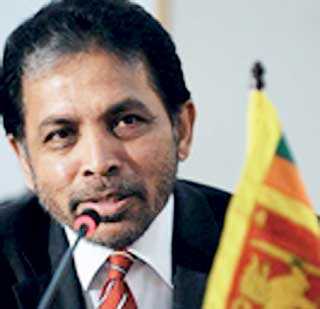Sunday Dec 22, 2024
Sunday Dec 22, 2024
Tuesday, 6 April 2021 00:00 - - {{hitsCtrl.values.hits}}
The Belt & Road Initiative (BRI) is considered China’s most ambitious plan in the modem era. It’s known as the cornerstone foreign policy of the Communist Party of China headed by the current General Secretary and President of the People's Republic of China, Xi Jinping.
The first public announcement was made by President Xi in September 2013 in his official visit to Kazakhstan and he raised the
initiative of jointly building the Silk Road Economic Belt and the 21st-Century Maritime Silk Road.
The “Belt” includes countries situated on the original Silk Road through Central Asia, West Asia, the Middle East, and Europe will consist of six economic corridors connecting China to the far reaches of Eurasia by road and rail.
The “Road” is a complementary initiative aimed at investing and fostering collaboration in Southeast Asia, Oceania, and North Africa, through several contiguous bodies of water – the South China Sea, the South Pacific Ocean, and the wider Indian Ocean area. Currently, there are more than 150 countries and international organisations signed agreements on BRI cooperation with China.
The Belt & Road Initiative aims to promote the connectivity of Asian, European and African continents and their adjacent seas, establish and strengthen partnerships among the countries along the Belt & Road. Policy coordination, facilities connectivity, unimpeded trade, financial integration and people-to-people bonds are the five major cooperation priorities of BRI.
The BRI focuses on connectivity as a vital part to advance cooperation, since the infrastructure is considered the bedrock of connectivity, the lack of infrastructure has held up the development of many countries.
Since the end of the Sri Lankan civil war in 2009, the Government of Sri Lanka (GOSL) commenced a series of developmental projects – largely focused on infrastructure – to revive its economy. Therefore, the GOSL was urgently looking for international assistance for building much-needed infrastructure in a country damaged by three decades of war and civil unrest.
However, to avoid pressure from global governance institutions such as the IMF and the World Bank to meet Western norms of accountability and conditionality related to political and economic reforms, the GOSL was looking for an alternative unconditional soft loan. In the meantime, China, in particular, committed billions of dollars for infrastructure investment under the BRI.
In partnership with BRI, Sri Lanka commenced a series of developmental projects, leading to a huge overhaul of Sri Lankan infrastructure which was dragging for generations. These include the Colombo-Katunayake Expressway, Southern Expressway, Outer Circular Highway, Hambantota Port, Matala Airport, Lakvijaya Power Plant, CICT Colombo Port Terminal, Colombo Lotus Tower – Telecommunication Tower, etc.
The Chatham House study reports that the cumulative value of Chinese infrastructure investment to Sri Lanka amounted to $ 12.1 billion between 2006 and July 2019. Due to the increasing number of Chinese projects in Sri Lanka, there was a reasonable number of critics quoting China's BRI as a “Debt Trap” and Sri Lanka is widely showcased as an example of ‘Chinese Debt Diplomacy”.
However, several studies conducted by few reputed institutions and their data on debt dynamics do not suggest China has engulfed Sri Lanka in a debt trap. The opinions given below are collected from selected professionals from Sri Lanka to understand the perception of China's BRI and Investments in Sri Lanka.
 Dr. Palitha Kohona, Sri Lanka's Ambassador to the People's Republic of China, former Permanent Representative to the United Nations and former Foreign Secretary
Dr. Palitha Kohona, Sri Lanka's Ambassador to the People's Republic of China, former Permanent Representative to the United Nations and former Foreign Secretary
The Belt & Road Initiative – Sri Lanka's opportunity to grab.
Chinese President Xi Jinping’s One Belt One Road (OBOR) initiative, also known as the Belt & Road Initiative (BRI), unveiled in 2013, has provided the countries of the wider region with a new challenge as well as a unique opportunity to fast track their economies along the path to development.
An investment bonanza is being made available under the BRI, especially for the countries along the ancient Maritime Silk Road which desperately need investment capital to advance rapidly.
Coupled with the investment-driven BRI, China has also in a subtle manner begun to emphasise its cultural and religious links in the wider region. A soft power caress of the region! According to Ian Johnson, author of ‘The Souls of China,’ President Xi Jinping has embraced religion as part of his ‘Chinese Dream’ and the ‘Belt & Road Initiative’. The nominally atheist Chinese Communist Party has now recognised that religion in Chinese history was a powerful tool in domestic governance and international diplomacy.
For Xi’s ‘rejuvenation’ of the Chinese nation and national culture after the ‘century of humiliation,’ this mix of faith and politics constitutes a ‘re-imagining of the political-religious state that once ruled China’.
When Xi Jinping’s father, Xi Zhongxun, was head of the party’s religious work beginning in 1980, China’s Central Committee issued the famous Document 19 warning party members against banning religious pursuits because it would isolate the Chinese people. Ever since, China has been restoring places of worship destroyed in the Cultural Revolution.
The larger temples in Beijing are carefully restored and maintained. The Niushou Temple in Nanjing is one of the most opulent religious structures anywhere. Today, many Chinese will claim that they are Buddhist, even though they may not be familiar with the deeper meaning of Buddhism.
The accommodation of Buddhism within Chinese society also creates a comfort level among the countries of the Indian Ocean region, which while sharing a broadly similar religious tradition with China, also have feared the secular robustness of the Communist ideology that dominates China.
Thus, the BRI and the softened global outreach of China, creates an opportunity that can be exploited by the countries seeking to benefit from it. Judiciously managed and sensitively implemented, the BRI could revive the glory days of the ancient Silk Route. For countries like Sri Lanka, despite the ill-considered allegations of a calculated debt trap, the BRI could provide the resources to leap frog from lower middle income status to a higher level in a short period of time.
Sri Lanka, sitting at the hub of the ancient Silk Route, has embraced this concept at the highest levels. From the President and the Prime Minister downwards, and numerous ministers, the BRI has been enthusiastically welcomed by the Sri Lankan leadership. Today, beset by the COVID-19 pandemic, it appears to be the only economic salvation for many countries of the Afro-Asian region.
It has been said that China’s BRI investment ambitions for shared prosperity, focused on cooperative infrastructure and connectivity enhancement, has the potential to make a greater impact than the post-World War US Marshall Plan. The Marshall Plan provided financial assistance to the war devastated economic giants of Europe and was a major factor in their quick recovery. But the funds available under the BRI make the Marshall Plan pale into insignificance.
The Marshall Plan provided over $ 140 billion, at 2017 dollar values, to assist Western European economies recover. The BRI intends to make available a stunning $ 4-8 trillion. While the Marshall Plan achieved much, the BRI funds are expected to achieve substantially much more by creating a vast region of shared prosperity stretching from Africa to East Asia, the clear beneficiaries being a large number of developing countries. Already many African economies are being transformed by BRI funds.
Adding strength to the BRI, the Chinese Yuan has now been recognised as a reserve currency by the IMF and China appears to be increasingly moving towards international payments in Yuan. The IMF elevated the Yuan, also known as the renminbi, or ‘people’s money,’ on the same day that the Communist Party celebrated the founding of the People’s Republic of China in 1949. The Yuan joins the US Dollar, the Euro, the Yen and British Pound in the IMF’s special drawing rights (SDR) basket, which determines currencies that countries can receive as part of IMF loans. Sri Lanka has negotiated a substantial currency swap using the RMB.
It is not only the vast accumulation of foreign reserves in China that makes the Chinese outreach tempting. China is also gradually becoming a force to reckon with in Information Technology which, coupled with its massive financial clout, makes it a formidable proposition as the world moves further into the 21st century. China is a leader in 5G technology. IT is likely to form the basis of the next industrial revolution. Live steaming which has caught on rapidly in China, now has an audience which is about the entire US population.
China has 830 million internet users and web development has become a cottage industry. It has become a staggeringly large e-commerce market in the world. Over half of the most valuable companies in the world are now Chinese with 126 Chinese companies in the Forbes Global 500. China started the electronic bike exchange and has rapidly progressed with electronic payments. Other countries are simply playing catch up. Baidu is the largest search engine and China’s Alibaba is bigger than Amazon and Ebay combined.
Much has been written about the massive progress made by China in the transport industry with over 37,000 km of high speed trains already in use delivering over 2.29 billion passengers in 2020. China is the biggest global market for motor cars and its production exceeded 25.7 million units in 2019 which exceeds that of the US and Japan combined. China is also rapidly leading the race for electric car ownership with a professed goal of carbon neutrality by 2060.
China’s construction industry has also climbed dizzying peaks with some city sky lines looking as if they were plucked out of science fiction movies. Space is a new frontier that China is claiming with its space vehicles photographing the dark side of the Moon and Mars. China is also making massive investments in bio technology, more than the US.
The outward-looking Belt & Road initiative, with China’s advances in IT, could have a massively transformative impact on the economies of the vast Asian and African regions encompassing 68 countries, home to over 65% of the world’s population. The BRI, is backed by China’s substantial economic clout and massive reserves, including through the Asian Infrastructure Investment Bank (AIIB) which claims 61 state members at present, possesses the potential to create significant opportunities for the entire region. Sri Lanka joined the bank enthusiastically. Australia is a member of the AIIB.
The BRI will be a closely related factor as Sri Lanka seeks to realise its own ‘Vistas of Prosperity,’ which provides the development blueprint for the country for the next few years and infrastructure development and IT will play a central role in it.
 Prof. Samitha Hettige, Civic Educator and Broadcaster
Prof. Samitha Hettige, Civic Educator and Broadcaster
The 30-year violent conflict in Sri Lanka ended in 2009, laying the foundation for a secure environment, lasting peace and sustainable development. The People’s Republic of China unconditionally supported all elected governments of Sri Lanka to resolve the conflict.
When the conflict ended, Sri Lanka expected many to help attract foreign investment to raise its socio-economic status. Very few responded and the Belt & Road Initiative took the lead re-energising the 700-year Silk Road bond with the flagship Colombo Port City project. At the same time investments to develop the sea and air ports in Hambantota, expressways, rail tracks and the world-renowned Shangri-La brand were directed to Sri Lanka.
These strengthened Sri Lanka’s image at global investor forums. It laid the foundation to boost employment and income generation opportunities for the masses that represent the bottom layer of the social pyramid. If Sri Lankan masses help to successfully implement these projects, they will be the best-ever conflict prevention mechanisms to be implemented in Sri Lanka in centuries. It is the responsibility of the citizens to think and act wisely without contributing to the agendas of those who don’t want Sri Lanka to rise.
 Nimal Perera, Chairman – NP Capital Ltd.
Nimal Perera, Chairman – NP Capital Ltd.
Though China’s Belt Road Initiative has offended a few and is viewed as debt trap diplomacy, if you study the concept with eyes opened and free of bias and prejudice, what China is attempting to do is to defend each country’s competitive advantage globally; to lead the charge for more effective international trade while benefiting mutually. It’s the recreation of the historical Silk Route, a network of trade routes spanning across Asia, Africa and Europe. More countries from different regions continue to partner with this initiative.
BRI is focusing on three main seaports as part of the recreation of the Silk Route: Athen’s Piraeus Port expansion by COSCO, London’s Royal Albert Dock transformation by Advanced Business Park and Colombo’s development of Colombo Port City project by China Harbour Engineering. A wide range of infrastructure, commercial and residential developments are being built in these three cities to facilitate international trade and investors.
Sri Lanka has an unparalleled opportunity to bring our economic vision to a reality with China’s support. This is precisely what Sri Lanka and China are aiming for over the last few years, which gained momentum with the commencement of the Colombo Port City.
Our country needs to secure a long-term economic recuperation. We are ready to get moving again. Sri Lanka must graduate out of its developing country status. China’s Belt Road Initiatives will undoubtedly strengthen Sri Lanka’s expansion and development to grow exports, infrastructure, maritime ports, international trade, create new jobs and secure foreign investments.
We must work hand-in-hand with China to ensure this growth which will take us to where we want to be; an export-led and investment-led country. Local governments must carry out their own feasibility studies and risk management to ensure the initiatives benefit the countries mutually.
 Dr. Dilini Pathirana, Senior Lecturer, Faculty of Law, University of Colombo
Dr. Dilini Pathirana, Senior Lecturer, Faculty of Law, University of Colombo
The region of Asia currently hosts a growing percentage of global GDP and is gradually becoming the centre of the world economy. The trading system which supports Asia’s economic rise is mainly premised on the Indian Ocean Region, as it provides a connecting platform for trade from Europe, Asia, the Middle East, and Africa. This is because the Indian Ocean links East, South, Southeast, and West Asia while connecting Asia to Africa and Europe and gives the Asian trading system great potential.
This scenario has given rise to a “race for influence in Asia” in which strategic presence in the Indian Ocean is crucial. Therefore, the geopolitical and geo-economic significance of the Indian Ocean has been increasing, and a noticeable rivalry has developed amongst the nations who aspire to have a strategic presence in the Indian Ocean for economic and security reasons. This rivalry has particularly intensified in light of China’s ambitions in the Indian Ocean Region, which is mainly manifest in the concept of 21st Century Maritime Silk Road under the Belt & Road Initiative, which exemplifies China’s vision to enhance the regionalisation in a thriving Asia.
The implementation of this vision gives rise to a wave of China-led infrastructure development projects spread across Asia. These investment opportunities have already been capitalised upon by Chinese firms, predominantly China’s State-Owned Enterprises (SOEs) – the main vehicle through which Chinese outbound investments are carried out in specific sectors such as infrastructure and mining. Chinese-driven infrastructure developments increasingly concern global powers, including the major Asian nations which have heightened interests in the region of Asia due to China’s enhanced strategic presence in the region.
Some of the Chinese infrastructure investment projects in Sri Lanka, such as the Hambantota Deep Seaport, Mattala International Airport and Colombo Port City Project, have been widely seen as significant in establishing China’s foothold in the Indian Ocean. They have been further expounded as pivotal gateways that provide China with access to important checkpoints in the Indian Ocean while assimilating Sri Lanka into China’s ‘String of Pearls’ and the 21st Century Maritime Silk Road by removing the country out from India’s sphere of influence.
Therefore, Chinese investments in Sri Lanka are particularly troubling from an Indian perspective due to the perceived threat posed by China’s growing presence in the Indian Ocean to India’s economic and security interests in the region. However, it is dubious whether Sri Lanka is equipped with a national strategy to deal with the ‘investment war,’ which is clearly ongoing in Sri Lanka in particular and in the region of Asia at large.
 Dr. Vagisha Gunasekara, Academic/Researcher
Dr. Vagisha Gunasekara, Academic/Researcher
I view the BRI as a transcontinental, transitional, cooperation- and connectivity-based long-term mega initiative that is emerging at a time when the influence of the United States is diminishing with the country’s economic decline and unrest triggered by socioeconomic instability.
From what I observe about BRI, it is a long-term policy and investment programme which aims at infrastructure development and acceleration of the economic integration of countries along the route of the historic Silk Road. The end goal of the BRI is to connect Asia, Eastern Europe, Middle East and Eastern Africa, which are identified as emerging markets, in terms of trade and development.
President Xi Jinping has described the BRI as the “Project of the Century” and as China’s version of the Marshall Plan. In my view, BRI is a broad framework of activities that seek to address global capitalism. It is driven by long-running politico-economic processes of capitalism development, which are prone to continuous crises that need to be managed somehow.
The logic of BRI has understood the crises under capitalism that are characterised by surpluses of capital and labour. These surpluses emerge, because capital cannot find profitable outlets, leading to mass unemployment of labour and an over-accumulation of capital. If this process stops, the process of accumulation (and hence, economic growth) also stops, leading to surpluses of capital on the one hand and unemployed labour on the other hand.
For forerunners in the world economic processes, such as China, these crises must be managed. If they are not managed, they can lead to significant social unrest, which could result, for example, the disintegration of existing political systems. From this vantage point, BRI is the latest moment in the process of geographical expansion and spatial reorganisation following China’s transition to the capitalist mode of production from the late 1970s onwards.
BRI is important for Sri Lanka as the country is along the route of the Maritime Silk Road, and could also possibly become part of the China-Pakistan Economic Corridor (CPEC). Already China has invested in mega projects in Sri Lanka to develop the connectivity of Sri Lanka with the rest of the world. I see many benefits of the BRI investments in Sri Lanka. They carry the prospect of helping to bridge the significant infrastructure financing gap, increase connectivity, link local markets to regional and global value chains, and thereby increase trade and investment. Sri Lanka is part of the AAIB, which I see as a refreshing alternative to the IMF or the World Bank.
While there are many benefits for Sri Lanka, I’d like to highlight the upgrades in the maritime infrastructure as most beneficial to the future of our country, as they can not only improve connectivity, but would facilitate us to explore and exploit ocean-based natural resources that fall within Sri Lanka’s Exclusive Economic Zone (a radius of 200 miles around the island). There are valuable minerals and aquatic resources in this zone. With better maritime infrastructure (especially the Hambantota and Colombo ports), better trading relations and routes with countries and increased cooperation with other countries due to better knowledge transfer (another goal of BRI) will make these natural resources more exploitable and marketable.
While there are concerns about Sri Lanka’s BRI projects ranging from Sri Lanka losing autonomy, sovereignty, to the growing debt burden, corruption and environmental hazards, thus far, there is little empirical evidence for such concerns to be real.
 Asela Waidyalankara, Technology Professional
Asela Waidyalankara, Technology Professional
Sri Lanka and China have enjoyed historical relations since the beginning of the 14th century, at the time Sri Lanka was the centre on the Maritime Silk Road and a key trading and diplomatic partner to China. Therefore, as China kicked off its $ 4 trillion BRI project to revive the ancient Silk Road, the testament of the close relationship between the countries was displayed when Sri Lanka was invited and incorporated to the BRI framework.
Sri Lanka has been classified as a middle-income country; for us as a nation to achieve the next revolution in our development journey, it is vital to have synergies with major trading nations and trading blocs. The BRI presents and unique opportunity for Sri Lanka to map its own destiny of becoming a strong and developed nation, the BRI acts as the perfect catalyst for this ambition, we will as a country enjoy the benefits of BRI within the next decade where Sri Lanka will foster unprecedented growth. My only hope is that apart from the trade and infrastructure investments of BRI, we will see a pivot to a ‘Digital Silk Road’ where technology collaborations of Sri Lanka and China can be strengthened and developed so that Sri Lankan tech through BRI will change the world.
 Maya Majueran K., Director, BRISL
Maya Majueran K., Director, BRISL
China’s Belt & Road Initiative (BRI) is one of the most ambitious foreign trade and investment initiative, and it is a global effort involving developed and developing countries and international organisations. I argue that the BRI should be viewed as ‘win-win’ cooperation rather than as a threat for participating countries. China acknowledges that successful implementation of BRI will bring shared prosperity, shared development, and win-win outcomes for all partner countries.
Countries along the Belt & Road have their own resource advantages and their economies are mutually complementary. Therefore, there is a great potential and space for strengthening cooperation in policy coordination, facilities connectivity, unimpeded trade, financial integration, and people-to-people bonds.
Sri Lanka is considered a vital part of BRI because of its strategic geographical location. Sri Lanka became one of the first countries to openly support the BRI and under the BRI, Sri Lanka managed to complete some of the infrastructure developments which was dragging for generations. According to Chatham house research paper, BRI-specific projects have contributed positively to Sri Lanka’s economy, and some have brought greater benefits than others.
However, Chatham House paper highlighted that there have been only limited economic spillovers for Sri Lanka, including knowledge transfer in the local labour force. The report further says that the environmental implications of Chinese investment projects in Sri Lanka are also mixed, while earlier projects were more harmful, however the recent projects such as the CICT and Port City in Colombo have adapted to stricter environmental standards. Therefore, to ensure the full legal compliance and sustainability of the investments, Sri Lanka must strengthen the formulation and improvement of investment rules, guide the public to form an objective understanding of investment behaviour and impact, and create a suitable environment for investment.
Furthermore, Sri Lanka is often described as a country that fell into a debt trap set up by China. But according to the IMF’s review, Sri Lanka’s debt problem not from Chinese lending, but the largest portion of Sri Lanka’s foreign debt was international sovereign bonds. Therefore, both Sri Lanka and China must conduct more researches in BRI related field to bring the facts to the people and focus on raising public awareness about BRI projects in Sri Lanka.
 Yasiru Ranaraja, Director, BRISL
Yasiru Ranaraja, Director, BRISL
Since the inception of the Belt & Road Initiative in 2013, the project passed a few important hurdles, which include linking Europe, the Bay of Bengal, the Arabian Sea, and the North Pacific via land-based routes. At present China’s Belt & Road Initiative with its three sea routes, three land routes, and three corridors, created alternative nine global trade routes, besides 18 European countries already signed MoUs with China’s Belt & Road Initiative and freight trains linking 48 Chinese cities to 42 European destinations have already completed over 15,000 journeys.
However, the strategic location of Sri Lanka was important to many global superpowers over the last few centuries and at present, the unprecedented Chinese influence over the world gives the island nation a clear spotlight. Sri Lanka holds significant importance to China in many areas and is considered as one of the most important nods of China’s Belt & Road Initiative.
Over the years the Sri Lankan Government has managed to complete many large-scale infrastructure projects along China’s BRI. The BRI projects in Sri Lanka were funded by Chinese banks and China’s State-Owned Enterprises play a vital role in completing these projects in given timelines at a competitive cost with Chinese technical and operational skills implemented during the constructions. However, apart from infrastructure development, the BRI also aims to work in different other areas to regain the cultural links along the silk road among member states which could be important to Sri Lanka.
According to the ‘Xi Jinping Thought on Socialism with Chinese Characteristics for a New Era,’ some important points were highlighted which can be related to BRI’s future pathway, one is adopting new science-based ideas for “innovative, coordinated, green, open and shared development”. In reality, Chinese State-Owned Enterprises will adopt such policies in the coming future to establish a common destiny between Chinese people and other people around the world with a "peaceful international environment".
Moreover, as President Xi Jinping quoted, the Belt & Road Initiative is the ‘project of the century at the opening ceremony of the Belt & Road Forum for International Cooperation on 14 May 2017, and in the same year October President Xi’s 19th Chinese Communist Party (CCP) Congress remakes highlighted to “ensure and improve living standards through sustainable development, it condones “market reform and opening” and encourages Chinese enterprises to “go out,” especially along the Silk Road Economic Belt and 21st Century Maritime Silk Road.
These remakes emphasise the extensive engagement in BRI projects in different areas apart from infrastructure development and allow Sri Lanka and other member states to engage in common human development.
The Belt & Road Initiative Sri Lanka (BRISL) is an education and consulting platform that specialises in cultural, business, and technological cooperation under the BRI. Through cooperation, BRISL determined to create mutual benefit and win-win cooperation for every community through BRI.
Currently, the Belt Road Initiative Sri Lanka (BRISL) and Silk Road Cities Alliance in Beijing have signed a MoU on the Annual Silk Road & Young Dreams Project. The two parties are dedicated to deepening the traditional friendship, making common efforts to build the Belt and Road, and promoting non-governmental cooperation in education and culture between China and Sri Lanka.
Moreover, the Belt & Road Initiative Sri Lanka (BRISL) signed an exclusive cooperation with Europe under the OBOReurope which operates as a go-between for European stakeholders and the Belt and Road initiative developers. The island is a major hub for the development of the new Silk Road, BRISL offers support to companies in conducting projects in Sri Lanka.